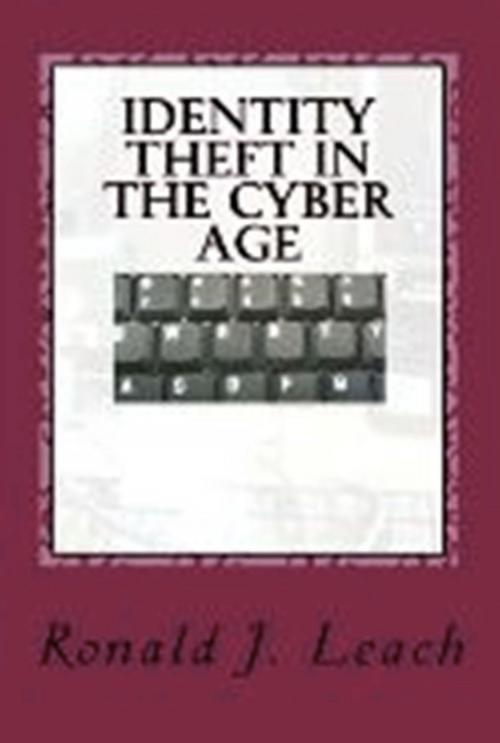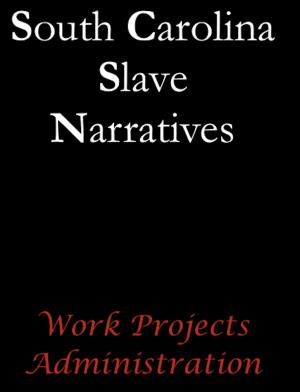Identity Theft in the Cyber Age
Nonfiction, Computers, Internet, Electronic Commerce, Business & Finance, Personal Finance| Author: | Ronald J. Leach | ISBN: | 1230000030164 |
| Publisher: | AfterMath | Publication: | November 13, 2012 |
| Imprint: | Language: | English |
| Author: | Ronald J. Leach |
| ISBN: | 1230000030164 |
| Publisher: | AfterMath |
| Publication: | November 13, 2012 |
| Imprint: | |
| Language: | English |
Do you know how to protect your vital identity information when you use computers for your banking, credit card transactions, and everyday purchases? What about email, web surfing, texting, and social networking?
This easy-to-understand book, intended for the general, non-specialist reader, will tell you what to avoid in using electronic commerce. You’ll learn about the most common security weaknesses of modern banking and e-commerce software and when to avoid using certain systems, the telltale signs of potentially insecure transmission of your data, and how to avoid the dangerous practice of “Pameiob.”
This book is a comprehensive, easy-to-understand guide, based on the author's experiences as a long-term identity theft lecturer and computer scientist, that is dedicated to keeping your assets and identity safe while navigating this dangerous world. Major topics in this complex subject are illustrated by case studies describing the personal experiences of some of the author's friends and acquaintances, and by experiences of some prominent public figures. You'll learn about the potential profit margins that make cybercrime so appealing to criminals - and why such crime is so hard to prosecute.
In this book you will learn just how pervasive the crime of identity theft is, and how you are at risk even if you don't do any online banking or make any online purchases using a credit card. We'll discuss some simple strategies that can help you cope with the side effects of the increase in digital information that is already available to potential identity thieves.
There are four main chapters. Chapter one is entitled I”dentity Theft: How Bad Is It?” and provides an overview of this all too common problem.
Chapter two, entitled “Identity Theft: How Vulnerable are You?” provides examples of actual cases of the most common types of identity theft that occur today.
The third chapter is entitled “Protect Yourself From Identity Theft” and contains a set of strategies that can be used to greatly reduce the chances of you suffering identity theft.
The fourth chapter is entitled “What To Do If You Are An Identity Victim.” It provides a set of overall strategies and specific actions you should take if you are the victim of identity theft.
There are three appendices. The first appendix contains contact information for the Federal Trade Commission, the three major credit reporting agencies, many US banks, many consumer protection organizations, and a few of the more established companies that specialize in identity theft protection and recovery. The second appendix contains a checklist for protecting yourself from identity theft. Appendix three also contains a checklist; this one is used to aid you in recovering from identity theft if you are a victim.
About the Author
Ronald J. Leach received the BS, MS, and Ph.D. from the University of Maryland and an MS from Johns Hopkins. He was a professor for over 41 years, and Computer Science Department Chair for 9, retiring as Professor Emeritus. He is the author of eight books on computing, three on identity theft, and well over 100 technical publications. He understands the identity theft issues well, having experienced it directly and having helped several friends respond when it happened to them.
Do you know how to protect your vital identity information when you use computers for your banking, credit card transactions, and everyday purchases? What about email, web surfing, texting, and social networking?
This easy-to-understand book, intended for the general, non-specialist reader, will tell you what to avoid in using electronic commerce. You’ll learn about the most common security weaknesses of modern banking and e-commerce software and when to avoid using certain systems, the telltale signs of potentially insecure transmission of your data, and how to avoid the dangerous practice of “Pameiob.”
This book is a comprehensive, easy-to-understand guide, based on the author's experiences as a long-term identity theft lecturer and computer scientist, that is dedicated to keeping your assets and identity safe while navigating this dangerous world. Major topics in this complex subject are illustrated by case studies describing the personal experiences of some of the author's friends and acquaintances, and by experiences of some prominent public figures. You'll learn about the potential profit margins that make cybercrime so appealing to criminals - and why such crime is so hard to prosecute.
In this book you will learn just how pervasive the crime of identity theft is, and how you are at risk even if you don't do any online banking or make any online purchases using a credit card. We'll discuss some simple strategies that can help you cope with the side effects of the increase in digital information that is already available to potential identity thieves.
There are four main chapters. Chapter one is entitled I”dentity Theft: How Bad Is It?” and provides an overview of this all too common problem.
Chapter two, entitled “Identity Theft: How Vulnerable are You?” provides examples of actual cases of the most common types of identity theft that occur today.
The third chapter is entitled “Protect Yourself From Identity Theft” and contains a set of strategies that can be used to greatly reduce the chances of you suffering identity theft.
The fourth chapter is entitled “What To Do If You Are An Identity Victim.” It provides a set of overall strategies and specific actions you should take if you are the victim of identity theft.
There are three appendices. The first appendix contains contact information for the Federal Trade Commission, the three major credit reporting agencies, many US banks, many consumer protection organizations, and a few of the more established companies that specialize in identity theft protection and recovery. The second appendix contains a checklist for protecting yourself from identity theft. Appendix three also contains a checklist; this one is used to aid you in recovering from identity theft if you are a victim.
About the Author
Ronald J. Leach received the BS, MS, and Ph.D. from the University of Maryland and an MS from Johns Hopkins. He was a professor for over 41 years, and Computer Science Department Chair for 9, retiring as Professor Emeritus. He is the author of eight books on computing, three on identity theft, and well over 100 technical publications. He understands the identity theft issues well, having experienced it directly and having helped several friends respond when it happened to them.















